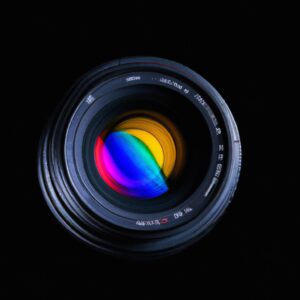Master Editing: Unlock Creative Potential with Essential Photo Editing Software & Techniques

Introduction to Photo Editing
Photo editing can be a powerful creative tool for producing amazing images online and in print. Whether you’re a beginner who wants to learn the basics or an experienced user looking to take your skills to the next level, mastering the fundamentals of photo editing is key. In this guide to mastering the basics of photo editing, we’ll cover software and techniques to help you create stunning images.
We’ll discuss digital image file types, color correction, enhancements, effects, creative techniques, looks, resizing images, and tips and tricks. With this guide, you’ll gain the knowledge to make your photos look professionally polished.
Photo Editing Software Overview
Photo editing is the process of manipulating images to create a desired look or feel. There are many software programs available that allow users to edit photos in a variety of ways, giving them the ability to transform an ordinary image into something extraordinary. In this section, we will provide a brief overview of some popular photo editing software programs.
For Mac users, PhotoShop and Affinity Photo are two popular choices. Both programs are loaded with features like layers, text tools, selections, brush tools, retouching tools, and filters. Photoshop is widely considered to be the industry standard for photo editing, while Affinity Photo is designed to be a more simple and budget-friendly option.
Adobe Lightroom is another popular photo editing software program for Mac users. Lightroom offers features such as non-destructive editing, color correction tools, and built-in presets. It is ideal for photographers who want to quickly organize, edit, and share their photos.
For Windows users, GIMP is a free, open source photo editing program. It offers a wide variety of features, including layers, masks, color enhancement, filters, and brushes. It is a great choice for those looking for a feature-rich, yet budget-friendly solution.
Corel PaintShop Pro is another popular Windows program. It offers features such as photo restoration, texture editing, special effects, and digital art tools. This program is designed for both beginners and experts, making it a great all-in-one solution for anyone wanting to take their photo editing skills to the next level.
Digital Image File Types and Formats
When working with digital photos, it’s important to know the different types of image files and the benefits of each one. Each file type has its own unique features that can help you create the perfect picture. Here are some of the most common file types:
- JPEGs (Joint Photographic Experts Group) are the most popular digital photo file format and are widely used for all types of photos. JPEGs provide good images with minimal file sizes.
- TIFFs (Tagged Image File Format) are used for high-resolution or commercial prints. TIFFs offer superior quality but require more storage space than JPEGs.
- PNGs (Portable Network Graphics) are another popular file type often used for web graphics because they provide excellent quality in a compressed format.
- GIFs (Graphics Interchange Format) are the preferred file type for animated graphics. Although not ideal for photos, GIFs are popular for web graphics because of their ability to be compressed.
In addition to understanding the different file types, it’s also important to know how to identify each for proper use. For example, JPEG images usually have the extension .jpg or .jpeg while TIFF images usually have the extension .tif or .tiff. Knowing the difference between these types of files and others can help you decide which is best suited for your project.
Color Correction Basics
In the world of photo editing, color correction is the process of adjusting colors in photos to improve their overall look and feel. It involves manipulating the saturation, contrast, and white balance of an image. Color correction is important, as subtle changes can completely change the tone of the photograph.
Saturation is a measure of the intensity and vibrancy of the colors in an image. Increasing saturation will make colors pop, while reducing saturation results in muted or dull colors. Contrast is a measure of the difference between the lightest and darkest areas of an image. Increasing the contrast makes your image look sharper, while decreasing it will make it blurry or washed out. White balance is the process of ensuring that whites appear pure and not tinted in any direction.
Adjusting these values is done through software such as Adobe Photoshop or Lightroom. In order to get the most out of the process, it’s important to understand why, how, and when to adjust each parameter. Doing this correctly can take your photos from “good” to “great”, and give them the professional quality you desire!
Enhancing Photos
When it comes to enhancing photos, the possibilities are truly endless! With the right set of tools, you can transform a bland image into something spectacular. One of the major elements of photo editing is manipulating shadows, highlights, curves, and sharpening. These techniques can be used to bring out the best in any photograph.
When working with shadows, you want to create depth of tone. This can be done by decreasing the brightness of certain areas in the photo, especially if they are too bright. To do this, try using tools such as Burn or Dodge.
Highlights are just as important in enhancing an image. By increasing the brightness of certain parts of the photo, you can create a greater sense of light and focus on certain elements. Using tools such as Levels, Curves, and Exposure are great for this purpose.
Curves are used to adjust the tonal range of an image. This can help to bring out certain details or create a more balanced look. This is achieved by using the Curve Editor in most photo editing software.
Sharpening is also essential when it comes to creating a crisp, attractive image. It enhances texture and detail, which makes the overall image look more vibrant. The usual tool for this is the Sharpening or Unsharp Mask filter.
Using these tools together can help to bring out the best in any photograph. Play around with the different options and settings until you achieve the desired effect. Don’t be afraid to experiment – you never know what could be possible with these powerful techniques!
Effects
Effects can be used to give your photos a unique character. Different effects can be achieved using blurring, burning, masking and vignetting. Blurring softens the edges of an image and is often used to create a dreamy feel. Burning darkens certain areas of the photo to bring out texture and depth. Masking masks off certain parts of the photo to create sharp lines and interesting shapes. Lastly, vignetting adds a border around the edges of the picture, darkening it and creating a focal point.
These effects can be used in various combinations to give photos a unique look and feel. With a bit of practice and creativity, you can come up with some amazing results! Here are some tips on how to use the four main effects:
- Blurring: To blur a photo, use the blur tool and experiment with different settings to achieve the desired effect. Blurring works best on areas with high contrast and textures such as fur or hair.
- Burning: To burn a photo, use the burn tool and adjust the radius, intensity and exposure to get the desired results. Burning works best on images with subtle details and shadows, such as portraits and landscapes.
- Masking: To mask a photo, use masks and blend modes to create unique shapes and patterns. Try experimenting with different blend modes to get the most out of your masks.
- Vignetting: To add a vignette, use the vignette tool and experiment with different radii and opacity settings. Vignettes work best on photos with bright backgrounds and high contrast.
With these tips, you can easily create stunning images that will wow your audience. So get creative and start experimenting today!
Creative Techniques
Creative techniques are the perfect way to create unique images and give them your personal touch. You can use creative techniques to make your photos look more interesting, or tell an engaging story. There are many different creative techniques that you can use to give your photos a distinct look.
- Collage – Telling a story with multiple images.
- HDR – Capturing a scene in vivid detail.
- Time Lapse – Showing the passage of time in a single shot.
- Stitching – Combining images to create a panorama.
- Light Painting – Illuminating an image with colorful light.
- Long Exposure – Capturing movement and blurring action.
- Ultra Wide-Angle – Capturing a wide view with a single shot.
- Infrared – Capturing ethereal, dreamlike images.
Creative techniques are great for giving your photos a unique look, but they work best when combined with post-production techniques like color correction, sharpening, and effects. Experiment with various creative techniques to find out which ones work best for you.
Stylizing Photos
Creating an aesthetically pleasing photo can be especially difficult when trying to capture a special moment. Applying different styles and looks to your photos can help with that. Whether you’re editing a photograph for work or personal use, stylizing the photo allows you to create something that both you and your viewers can appreciate.
Stylizing your photos means making adjustments to the color palette and adding elements of design to make the image more interesting. This could involve anything from muted tones and soft gradients to bold strokes and strong contrasts. It also means implementing design elements like texture, frames, and borders. When done correctly, stylizing can give your photo a unique look that will stand out from the crowd.
To start stylizing, you must first determine which style you want to go for. If you’re looking for a vintage look, you may want to add aged textures and faded colors. If a modern look is the goal, then vibrant hues and light effects might be more appropriate. Some styles are low-key while others are more playful and energized. By experimenting with different looks you’ll eventually discover which style works best for your image.
Stylizing a photo is relatively easy and doesn’t require any expensive equipment or software. Most tools needed for stylizing can be found right within basic photo editing programs. With the right combination of color adjustments and design elements, you can easily transform any photo into a piece of art.
Different Looks
Applying different looks to your photos can give them a unique touch and make them jump out of the ordinary. If you want to make your photos have a more old-fashioned vibe, a modern and minimalist feel, or any other style, there are ways to do so through photo editing.
A good starting point is to look for resources online that provide examples of the type of look you’re after. You can also experiment with different effects offered by photo editing software, such as filters, textures, and color palettes. For old-fashioned looks, you might consider playing around with sepia and vintage features. Modern looks can be achieved using vibrant colors, sharp lines, and geometric shapes. Minimalistic looks rely on minimal elements, muted colors, and negative space.
Finally, don’t forget that you can blend different effects and techniques in order to create a look that’s all your own. With enough practice and creativity, you’ll soon become a master at creating different looks with your photographs!
Resizing Images
When it comes to photo editing, resizing images plays a big role. Knowing the differences between resizing for screen and resizing for print can save time and effort when making edits.
Resizing for screen is necessary when the image will be displayed digitally—such as on a website or a computer monitor. When resizing for screen, the goal is to make the image file size smaller so it can quickly load on a page. To do this, you’ll want to reduce the pixels per inch (PPI) of the image.
Resizing for print is a bit different. If an image is being used in print material—from business cards to large billboards—you’ll need to increase the PPI of the image. That means you’re creating more pixels per inch, which creates a sharper, higher-quality image for printing.
It’s important to note that resizing an image can also affect its aspect ratio. The aspect ratio is the ratio between the width and height of the image. For example, if the width is two times the height, the aspect ratio is 2:1. Resizing without maintaining the aspect ratio could distort the image.
Tips & Tricks for Photo Editing
Mastering photo editing involves more than just knowing how to use the right software. There are many tips and tricks that can help you take your photo editing skills to the next level. Here are some of the most effective ones:
- Sharpening images: Sharpening can make a huge difference in making your photos look more crisp and vibrant. You can sharpen an image by using a sharpening filter that will adjust the contrast along the edges in your photo.
- Adjust saturation levels: Adjusting the saturation of colors in your photos can give them a vibrant, eye-catching look. You can select from different presets or use the adjustment sliders to manually adjust the saturation of each color.
- Experiment with curves: Curves are another great tool for adjusting contrast and brightness in an image. You can use curves to make subtle or dramatic changes depending on the effect you want to achieve.
- Get creative with blending modes: Blending modes allow you to combine multiple layers of adjustments together to create a unique look. Experimenting with different blending modes can give you some truly amazing results.
- Work with selective adjustment tools: Selective adjustment tools let you apply adjustments to specific areas in an image rather than applying the same adjustments to the whole photo. This can be a great way to fine-tune the details in your photos.
By following these tips and tricks, you can quickly improve your photo editing skills and take your images to the next level. Remember that practice makes perfect, so don’t be afraid to experiment and have fun with it!
Conclusion
Photo editing is a skill that takes time and dedication to master, but the rewards are well worth it. Through this guide, we’ve explored the different software used for photo editing, as well as the various file types, color correction techniques, enhancements, effects, and creative techniques. We’ve also seen how to adjust photos for different looks and sizes. All of these tools allow you to create beautiful images in no time.
To enhance your photo editing skills even more, make sure to keep up with the latest updates and trends, experiment with different software, and practice regularly. With hard work and dedication, you can quickly become a pro. For further reading, check out the following resources:
By mastering the basics of photo editing, you can take your photography to the next level. With the right tools and knowledge, anyone can create stunning images.
comments: 0






